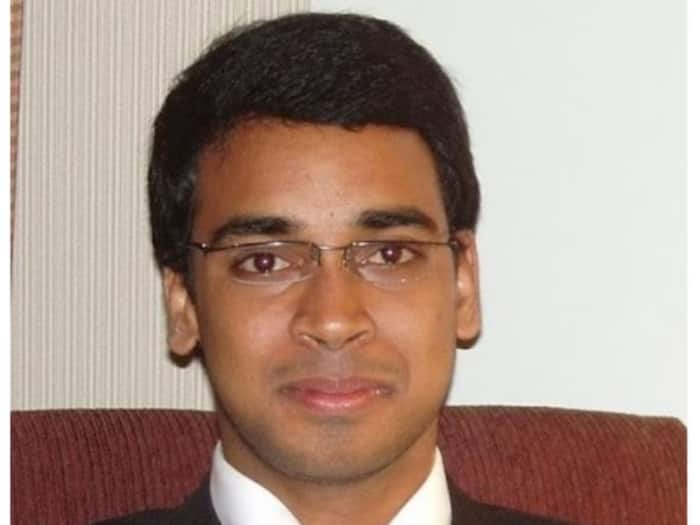
Written By Nishit Raghuwanshi
Published By: Nishit Raghuwanshi | Published: Jan 31, 2025, 03:44 PM (IST)

In an era where environmental contamination from Per- and Polyfluoroalkyl Substances (PFAS) poses an increasing threat to public health and ecosystems, the groundbreaking research conducted at the University of Dayton Research Institute (UDRI) stands as a pivotal advancement in environmental protection. Under the leadership of Environmental Engineer Saikumar Chalivendra, this ambitious study, commissioned by a federal environmental agency and a government research program, has established new paradigms for understanding and addressing PFAS destruction methodologies.
The high-stakes project, focusing on two of the most concerning PFAS compounds – Perfluorooctane Sulfonic Acid (PFOS) and Perfluorooctanoic Acid (PFOA), emerged as a critical initiative in the nation’s response to PFAS contamination. Saikumar Chalivendra faced the complex challenge of designing and implementing sophisticated laboratory-scale experiments while coordinating with multiple stakeholders, including federal agencies, research teams, and environmental experts.
At the core of this research success was a methodical approach to experimental design and data analysis. As the primary researcher responsible for thermal degradation studies, Chalivendra implemented innovative analytical techniques and rigorous control measures that not only met but
substantially exceeded project objectives. The study achieved a remarkable 30% reduction in secondary emissions during PFAS destruction – a significant breakthrough in environmental safety standards.
The impact of this research extended far beyond immediate technical achievements. Through strategic experimental design and efficient analytical methodologies, the project provided crucial data that directly informed federal regulatory frameworks for PFAS disposal. Perhaps most notably, these findings were accomplished while maintaining strict quality control standards and implementing comprehensive safety protocols throughout the research period.
Stakeholder engagement played a crucial role in the project’s success. The exceptional quality of research and comprehensive data analysis left such a strong impression on the federal agencies that the findings became instrumental in shaping industry best practices for PFAS incineration. This testament to Chalivendra’s technical expertise and research management capabilities has established him as a leading authority in PFAS remediation technologies.
The achievement has garnered recognition across the environmental research community, earning accolades from both academic and regulatory sectors. The project’s success has become a benchmark for future PFAS research initiatives, demonstrating how innovative experimental approaches and strategic scientific investigation can deliver exceptional results in environmental protection.
For Saikumar Chalivendra personally, the project represented a significant milestone in his career, showcasing his ability to conduct complex environmental research while managing multiple stakeholder expectations. His expertise in gas-phase analytical techniques, particularly Fourier-transform infrared spectroscopy (FTIR), proved invaluable in identifying and quantifying PFAS breakdown products, contributing to a deeper understanding of destruction pathways.
This research success story illustrates how strategic scientific investigation, when combined with effective project management practices, can transform our approach to environmental challenges. The PFAS Thermal Destruction Study not only contributed to advancing environmental protection methodologies but also established new standards for research execution in the sector. As environmental concerns continue to grow, this project serves as a compelling example of how focused scientific leadership can drive exceptional results in addressing complex environmental challenges.
Looking ahead, the implications of this research extend beyond immediate achievements. It demonstrates how effective experimental design and analytical expertise can overcome complex environmental challenges while delivering exceptional value to stakeholders. As the field of environmental remediation continues to evolve, this study stands as a model for future research initiatives, showcasing the powerful combination of technical innovation, analytical excellence, and environmental stewardship under Saikumar Chalivendra’s capable leadership.
A distinguished professional in environmental engineering and research, Saikumar Chalivendra has established himself as a leading expert in PFAS remediation and thermal destruction technologies. His
comprehensive experience spans experimental design, analytical chemistry, and environmental protection, including successful completion of critical research projects for federal agencies. With advanced expertise in analytical techniques such as FTIR and a deep understanding of reaction kinetics, Chalivendra has demonstrated exceptional ability in optimizing research methodologies, implementing innovative analytical approaches, and ensuring superior quality control standards. His expertise in integrating advanced analytical tools and experimental design has consistently delivered excellence in environmental research while maintaining strict safety and regulatory compliance.